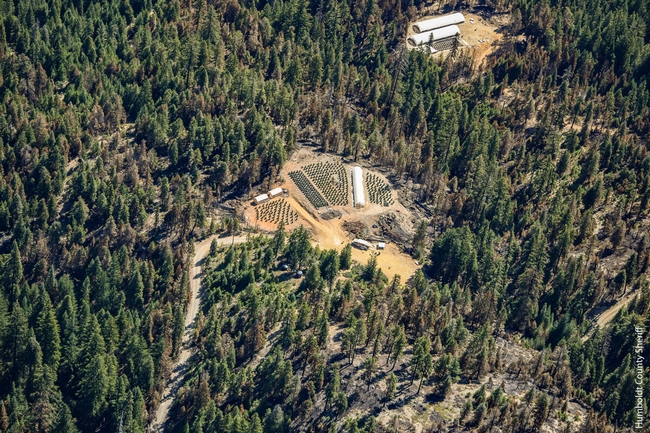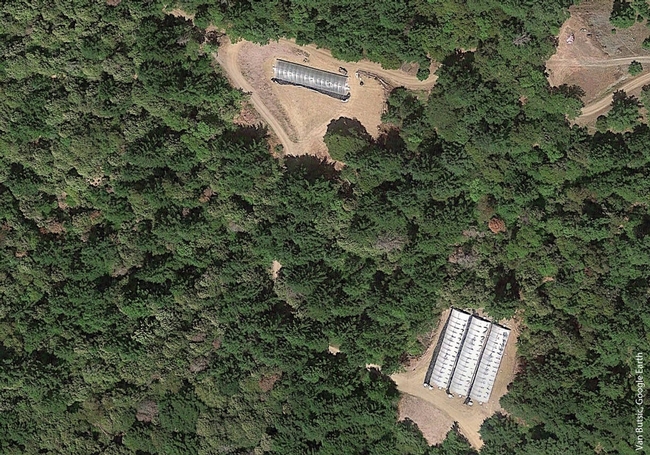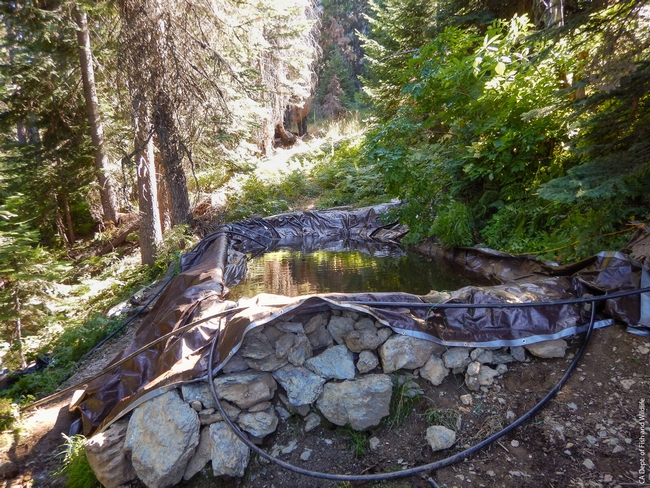Ranch, forest landowner views on cannabis evolving in Humboldt County
Legalization of cannabis in California changes the dynamics of competing industries
Humboldt County has long been known for marijuana production. Over the last decade, the North Coast's Emerald Triangle – Humboldt, Mendocino and Trinity counties – have experienced a large influx of growers moving to the area to get into the cannabis business.
To get a better understanding of the impact the so-called “Green Rush” has had among neighbors of this expanding cannabis industry, University of California Cooperative Extension researchers surveyed traditional agricultural producers and landowners of larger parcels to find out their experiences and perceptions of cannabis.
The greatest expansion of cannabis cultivation occurred within the remote corners of these counties.
“Forested and woodland parcels became valued, not for timber or ranching, but for their capacity to support cannabis operations,” said Yana Valachovic, UC Cooperative Extension director and forest advisor in Humboldt County. “Land prices skyrocketed and a whole wave of newcomers surrounded ‘traditional' producers of forest products and beef. The nearly exponential growth of the cannabis industry has been a shock to some and there has been a steady discussion of social, economic and environmental concerns.”
In January 2018, Valachovic and three of her UCCE colleagues sent a survey to landowners who owned more than 500 acres in Humboldt County. Of the 211 landowners contacted, 71 responded.
Of the 71 landowners responding to the survey, 18% said they had grown cannabis on their property and 40% said they had indirectly profited by trucking or operating heavy equipment for the cannabis industry. About half of the landowners didn't indicate whether they had or had not grown cannabis.
While the burgeoning cannabis grows have brought jobs to the economically challenged county, over 60% of the landowners agreed that cannabis had contributed to labor costs, 57% agreed it had negatively affected their livestock operations and the majority reported negative impacts to their property.
“Fences have been wrecked, roads damaged, and stream water theft,” wrote one rancher.
Since cannabis has become legal in California, most landowners (64%) have maintained their views on the industry. Yet, Valachovic and her colleagues are interested in seeing how this rural community adapts to protect its environmental health and economic prosperity.
“It's not news that ranchers can have issues with cannabis farmers, but the evolving perspective is what most excites me about this survey,” she said. “The cannabis industry is very dynamic and has experienced rapid expansion, price highs and lows, and an evolving public policy discussion trying to keep up with the changes. The results of this survey reflect opinions from 2018 and with the inclusion of hemp or low THC cannabis, perspectives will continue to evolve.”
The study was conducted by Valachovic, UC Cooperative Extension advisors Lenya Quinn-Davidson and Jeffery Stackhouse, and UC Cooperative Extension specialist Van Butsic in the Department of Environmental Policy Management at UC Berkeley.
The authors concluded that while public policy will not solve all social behaviors and competing industry needs, land-use policy can help mediate land-use conflicts and zoning to support new economic opportunities as well as existing multigenerational businesses.
“Humboldt has been at the forefront of these issues for decades and perhaps the lessons learned here can be helpful for other communities,” Valachovic said.
The survey results are published in the July–December 2019 edition of California Agriculture, the peer-reviewed journal of UC Agriculture and Natural Resources.





Posted by Grant Sullivan on November 10, 2020 at 10:22 AM